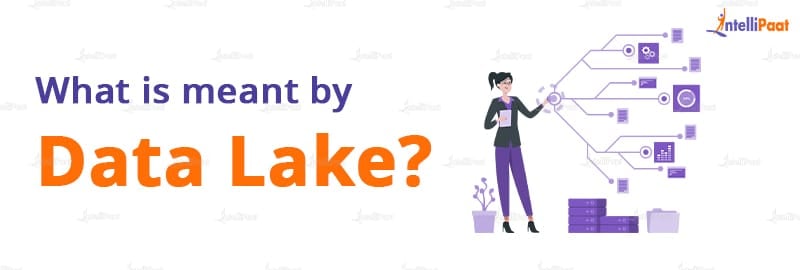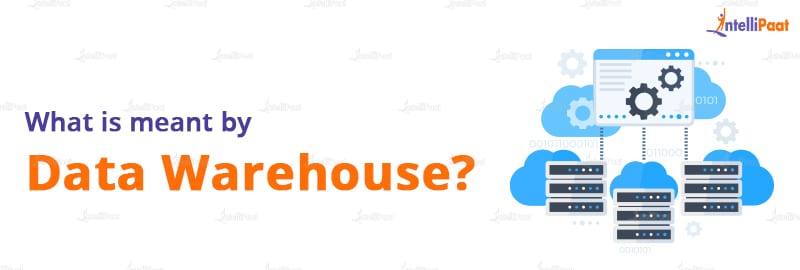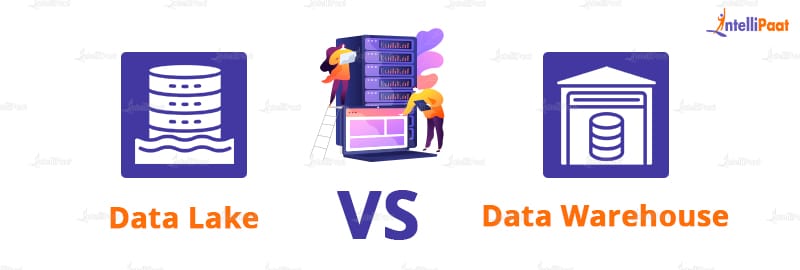Data Lake vs Data Warehouse: Key Differences
Considering these two very important tools for data intelligence namely data lake and data warehouse let’s have a brief introduction about these two technologies.
The terms Data Lake and Data Warehouse are often confused by the readers. In many cases, readers interchange them while talking about them. These two tools provide data storage solutions for both raw and processed data. While proceeding further with the blog we will learn about both of the terms and will witness a few of the most prominent pointers of difference on ‘Data Lake vs Data Warehouse’.
Before breaking the ice to catch the fish from the icy water, let’s quickly have a look at the topics that will be covered in the blog.
Topic to be covered
- What is meant by Data Lake?
- What is meant by Data Warehouse?
- Difference: Data Lake vs Data Warehouse
- Conclusion
Are you an aspiring Data Engineer? Are you looking for a place to kick-start your journey? Check out our YouTube video on
What is meant by Data Lake?

While talking about the very first part of the blog, Data Lake is a type of data repository which is used to store data in a central storage place. James Dixon, the CTO of Pentaho, is the author of the term. He also suggested that data in a data lake is ad hoc in nature.
Let’s move forward and understand the concept of a data lake, from the below-mentioned pointers:
- AWS Data Lakes can store all forms of data namely structured data, semi-structured data, and unstructured data which makes data lakes flexible.
- When data is stored in data lakes, the whole process takes place using different identifiers and metadata tags which makes the data retrieval process faster.
- Data lakes in a real sense work as a lake of data, which means it provides a massive storage space, where huge volumes of data can be stored easily.
- Data stored in data lakes are raw by nature, which can be used to process in such way that it produces unseen and unexpected insights, which can be useful.
- Data stored in data lakes can also be used to build data pipelines which can be processed using data analytics tools that can be used to collect insights for organizations.
This Data Warehousing Certification provided by Intellipaat will help you master Business Intelligence concepts.
We just concluded learning about Data Lakes. Moving forward and throwing the hook into the icy waters let’s catch up on what is meant by the data warehouse.
What is meant by Data Warehouse?

In a very similar manner to Data Lake, Data Warehouse is a type of data repository where highly structured data is stored, and it is preferable for business organizations.
Let’s learn more about Data Warehouse, read the below-mentioned points to understand Data Warehouse better:
- Data Warehouse is meant for business organizations, where highly sophisticated data is dealt with.
- Data Warehouse helps organizations make strategic decisions to enhance the organization’s yield.
- Important functions performed by the Data Warehouse:
- Data Extraction
- Data Cleaning
- Data Transformation
- Data Loading
- Data Refreshing
- The actual data is processed so that it can be separated into several portions and stored on shelves known as data marts for a data warehouse to function.
- Data retrieval is straightforward as compared to other similar data repositories, but a data warehouse is not unstructured or semi-structured data.
Want to take a deeper dive into the above-discussed topic? Check out the Data Warehouse Tutorial!
I hope you got a glimpse of what is meant by the data warehouse. Let’s go to the next and final section of the blog to get the actual knowledge of Data Lake vs Data Warehouse.
Difference: Data Lake vs Data Warehouse

Below mentioned are the main differentiating pointers on which you can differentiate between a data lake and a data warehouse. Let’s have a look at them together, I bet after reading the below-mentioned points you won’t be needing any further read about them.
| Pointer | Data Lake | Data Warehouse |
| Storage | All types of data are kept in the data lake, regardless of their origin or form. The data is still in its unprocessed form. Data is only altered when it is necessary. | Data from transactional systems or data made up of quantitative measures and their properties will be found in a data warehouse. The information is cleansed and altered. |
| Data Capturing | Data lake captures all types of semi-structured and unstructured data, as well as all types of data, and is preserved in its original form from source systems. | Captures structured data and arranges it according to preset schemas for data warehouse uses. |
| Storage Cost | As compared to storing data in a data warehouse, big data technologies are comparatively less expensive in the data lake. | Data warehouse storage is more expensive and time-consuming. |
| Data Timeline | All data may be stored in data lakes. This covers both the data already in use and the data that could be used in the future. Data is also preserved permanently so that it may be used for analysis in the future. | Analyzing numerous data sources takes up a substantial amount of time during the building of the data warehouse. |
| Processing Time | Users of data lakes have access to data that has not yet been converted, cleaned, or organized. Consequently, compared to the conventional data warehouse, it enables customers to get their findings more rapidly. | Data warehouses offer insights into pre-defined questions for pre-defined data types. So, any changes to the data warehouse needed more time. |
| Schema | The schema is often established after the data has been saved. This provides high agility and simple data acquisition, however, the process must be finished with effort. | Typically schema is defined before data is stored. Requires work at the start of the process, but offers performance, security, and integration. |
| Task | All forms of data may be found in data lakes, giving consumers access to raw, unprocessed data before it is sorted and organized. | Data warehouses provide answers to pre-determined inquiries about pre-determined data forms. Therefore, any data warehouse modifications required extra time. |
| Analyzing tools | Big data analytics, data visualization, data mining, and predictive analytics. | Data visualization, BI, data analytics. |
| Key Benefits | These customers are unlikely to use data warehouses since they may need to go beyond their capabilities, thus they combine diverse sorts of data to develop new queries. | Most users in an organization are operational. These types of users only care about reports and key performance metrics. |
Preparing for an interview? Check out these Top Data Warehouse Interview Questions to help you ace your interviews.
Now it’s time to draw our catch to the dinner table, let’s see what we have learned throughout the blog.
Conclusion
We discussed the key distinctions between a data lake and a data warehouse. A data lake is available for all sorts of data, but a data warehouse is only available for highly structured data, which is the major distinction between a data lake and a data warehouse. Both data lakes and data warehouses are types of data repositories that are used to store data in a very sophisticated manner making it easily accessible from any part of the world connected to the internet. Both of them have different usage as a data lake covers all types of sectors whereas a data warehouse is preferably used by business organizations for better yields. I hope now you can differentiate between the two commonly used terminologies and learnt something new.
The post Data Lake vs Data Warehouse: Key Differences appeared first on Intellipaat Blog.
Blog: Intellipaat - Blog
Leave a Comment
You must be logged in to post a comment.








